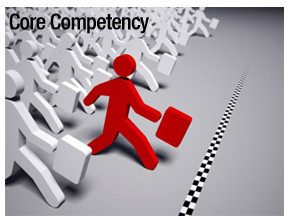I recently had the opportunity to create content for Rhythm University, our knowledge center that is full of tools,  tips, videos and lots of other fabulous content to drive your strategy into execution. I wrote about how companies can help uncover and identify their core competencies. The more I thought about core competencies, I kept thinking about how core competencies are such a critical component when setting your BHAG.
tips, videos and lots of other fabulous content to drive your strategy into execution. I wrote about how companies can help uncover and identify their core competencies. The more I thought about core competencies, I kept thinking about how core competencies are such a critical component when setting your BHAG.
As you may be aware, your BHAG should be connected to your Hedgehog which is the intersection of the following three components:
- What you can be the best in the world at (core competency)
- What drives your company’s economic engine (profit per x)
- What you are deeply passionate about (core purpose)
If you believe that you can be the best in the world at something, it clearly must be a core competency that your organization either already has or can develop. Your core competencies should get to the essence of what you can do better than anybody else in the world.
In determining your company’s core competencies, you need to ask what is the underlying skill, ability, knowledge, experience, technology or process that enables your company to provide its unique set of products or services. What is it that your company is uniquely good at? What can you do better than others? What is the process at the base of my company that can be leveraged across industries, strategic business units and geographic locations?
You next need to determine how you can use your company’s core competencies to develop strategic products and services that have an intrinsic competitive advantage. High-performing companies work on developing new core competencies and expanding their existing ones to enter new and future markets.
Think you may have identified a core competency? Here is a three-part test to confirm your core competency.
- Relevance – The competence must be something that differentiates your company in a way that strongly influences the customer to choose your product or service over competing products. If it does not really matter to your customers, then it has no effect on your competitive position and therefore isn’t a core competency.
- Can it be copied? – A core competency should be something that is difficult for the competition to imitate. If the competency can easily be reproduced by the competition, it isn’t a sustainable competitive advantage. As competencies are skills that are continually improved, you can maintain your competitive advantage by always getting better.
- Breadth of Application – A core competency should be something that can be applied to a number of potential markets. If the competency opens up only small, niche markets then it may not provide enough profit incentive to explore.
This is the first blog in a series regarding setting a Big Hairy Audacious Goal or BHAG. Remember that your core competencies compose one of the three pillars that supports this futuristic goal. As these core competencies are what separate you from the competition, it is critical that you identify what they are and work on them continually to maintain and improve your advantage in the marketplace.
Want to learn more about Core Competencies? Check out these additional resources:
Examples of Core Competencies in Business
How to Leverage Your Core Competencies to Create a Competitive Advantage



